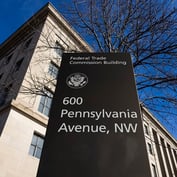What will federal regulation of insurance holding companies like American International Group look like?
Federal banking regulators have provided a strong hint as to how they will regulate non-banks such as insurers through a proposed rule published for comment in June.
Under the proposal, insurers which operate thrifts or are designated as systemically significant or SIFI would be subject to the same capital standards as banks at the holding company level except for certain unique insurance activities.
Special capital treatment for insurers under the proposal would be only applied to specific activities, such as separate accounts, deferred acquisition costs and insurance underwriting. Otherwise, they would be regulated as banks.
It is likely that the same capital standards would be applied if the Financial Stability Oversight Council designated an insurer as a SIFI and subjected them to Federal Reserve Board as well as state oversight.
The Office of Thrift Supervision (OTS) was AIG’s consolidated regulator before Dodd-Frank was enacted.
All of OTS’s insurers were officially transferred to Federal Reserve Bank supervision when the OTS was disbanded.
In general, supervision of thrifts was shifted to the Fed, the Office of the Comptroller of the Currency (OCC) and the Federal Deposit Insurance Corporation through Dodd-Frank.
Dodd-Frank abolished the OTS effective July 21, 2011.
The Fed was given all OTS authority over savings and loan holding companies. These are companies, including large insurance companies, which own a federal or state chartered savings association.
The OCC was given supervisory authority over federal savings associations (but not over the companies that own these associations).








 August 14, 2012 at 10:18 AM
August 14, 2012 at 10:18 AM










